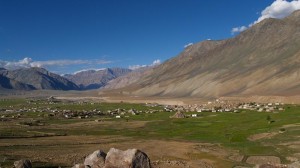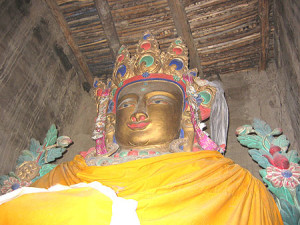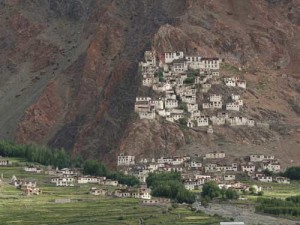Popular for its scenic beauty, trekking base and monasteries, Padum lies between the Greater Himalayas and Zanskar Range of mountains in Kargil District. Situated at an altitude of 3,505 m, Padum is considered the most populated region of Zanskar. A few centuries back, the region was under the influence of North Indian Buddhism.
About 30% of Padum’s residents like the Baltis and Lahulis are of Indo Aryans lineage, and are followers of the Sunni Muslim sect.Padum Prime Attractions
The set of rock carvings on a massive boulder alongside the river Zanskar draws thousands of tourists. They are ancient rock sculptures belonging to the 8th century. These rock carvings provide evidences of the influence of North Indian Buddhism in Ladakh.
Starrimo Monastery,
on a hilltop, is an old structure depicting various Buddhist morals and values through its paintings. The monastery in an old hamlet called ‘Pibiting’ is inhabited by more than 30 monks. The nearby area, even the hills, are terraced for farming. This 10th century structure is completely designed on the lines of Stupa architecture.Karsha monastery: The monks’ quarters and temples of this biggest monastery of Zanskar can be seen crawling picturesquely up on a steep mountain slope.
The monastery of Karsha belongs to the Gelugpa order and is looked after by Likir. Like in Likir, the abbot is a brother of the Dalai Lama. The Chamba Ling temple, which one encounters on the way to the monastery, dates back to the 11th century whereas, the monastery itself was built in the 15th century. Karsha monastery is the largest in Zanskar and is occupied by nearly 100 monks. The monks come from Karsha village and the outlying areas between Padum, Pibiting and Abran and return to their villages each autumn to receive contributions of grain and donations for the monastery.How to reach
The Kargil-Padum road remains open from mid July to early November. One can easily commute by bus or hire a taxi/jeep to explore the nearby destinations like Stongdey (19 km), Zangla, Sani (6 km) and Karsha (5 km). The months of June and July are considered the best for trekking.
By Road: The 240-km long Kargil-Padum road, of which the first 90-km stretch is paved, remains opened from around mid July to early November. The J&K SRTC operates a thrice-weekly B-class bus service from Kargil. However groups can charter A-Class or even Super-Deluxe buses to visit Zanskar, including the interior places of interest like Strongly, Zangla and Karsha.
Jeeps and Gypsy taxis can also be hired at Kargil. During June and early July, prior to opening of the road, it is recommended to walk into Zanskar from Panikhar or Parkachik onwards. In June, the summer is at its height in the region and the climate is ideal for trekking along the route free from vehicular traffic of any kind and when the countryside is freshly rejuvenated into life after months of frigid dormancy.
Padum Accommodation
The tourist Complex at Padum provides furnished rooms for staying. There is catering arrangement in the complex, while camping place nearby is available for budget tourists traveling with personal tents. Padum town has several private hotels where rooms with basic facilities are available.
Padum Map
Peddar Rd, Cumballa Hill, Mumbai, Maharashtra, India
Jammu & Kashmir, India



